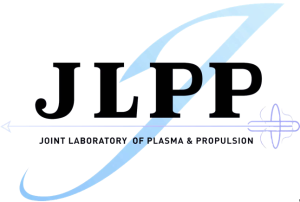Our research
Helicon Thruster
Compared with the traditional electric thruster, the helicon plasma thruster(HPT) has the characteristics of no electrode (no electrode corrosion problem), long life, high ionization rate and high density plasma, which has attracted much attention. It has great prospects in the future development of aerospace.
The traditional electric thruster will face serious life problem during the working process. Electrodes of electric thruster are exposed to the plasma and suffer from limited lifetime caused by electrode corrosion and poor thruster performance due to plasma contamination (in ion thrusters, accelerator grid corrosion is a major life-limiting factor, and in Hall thrusters, there are problem with cathode and wall corrosion), limiting their performance as well as their applications. This is a major drawback of this type of thruster.
In this case, electrodeless operation (no direct contact between electrode and plasma) makes a lot of sense. A promising development is the helicon plasma thruster(HPT).
![]()
Structure ofHelicon Plasma Thrusters (HPT) ![]()
Among them, the four parts of quartz tube (discharge cavity), magnetic field generating device, radio frequency source and helical wave antenna constitute the helical wave plasma source and are the most important components.
The working principle of the HPT is as follows. A typical magnetic circuit system provides a uniform axial magnetic field with divergent magnetic field lines at the end of the quartz tube. The helical antenna wound outside the quartz tube is connected to a radio frequency power source. The current flows through the antenna to excite a time-varying magnetic field, thereby generating an electric field. The electric field accelerates the free electrons in the gas until ionization occurs, forming a plasma. The wave propagates in the plasma to generate the coupling effect of the wave and the particle. Based on the current-free double-layer effect of the helicon plasma in the diverging magnetic field, the ions are accelerated to form a high-speed ion beam jet, thereby generating thrust.
The characteristics and advantage of the HPT are as follows:
(1) No electrode corrosion, long life
As a new type of propulsion technology, HPT uses a helicon ionization source, which does not require electrodes and avoids ablation problems. The beam is neutral and does not require a neutralizer. The divergence angle of the plasma plume is small, which greatly prolongs the thrust. device life.
(2) High-performance spiral wave ionization source
The radio frequency plasma source, especially the helicon source, is one of the most attractive ionization sources for the future space electric propulsion system. The discharge method is different from the traditional electron bombardment gas discharge, but through Landau damping and Trivelpiece-Gould (TG) mode generate high-density plasma (there is no unified understanding of the physical mechanism of the high ionization rate of helical wave plasma).
In addition to generating ions and electrons by bombarding neutral atoms with high-energy electrons, the helical wave plasma source mainly generates high-density plasma through the interaction of waves and particles, which has a great advantage in energy utilization efficiency. Compared with capacitive and inductively coupled plasma sources operating under the same RF power conditions, the helicon source can generate higher plasma density.
Since the helicon source can efficiently generate plasma, the propellant utilization efficiency can be as high as 99%, and it has been developed for use in different space electric propulsion systems, such as the front stage ionization source of Hall thrusters and VASIMR or using its own ionization source. The double-layer acceleration effect was developed into HPT
(3) Various types of propellants are available
The helicon plasma source is also suitable for a variety of working gases, which provides more favorable conditions for its development in more applications. In addition to its great advantages in deep space exploration, the helical plasma propulsion system has also emerged in the field of low-orbit satellites in the outer atmosphere. It can be used as the ionization source of the air-breathing thruster in the atmospheric environment, because it can be lighter and the cost can be greatly reduced. With the electrodeless structure of the helical wave plasma propulsion system, there is no ablation (or corrosion) problem, which greatly reduces the cost. increase its service life.
In our laboratory, a set of helicon plasma source system has been built, which can realize plasma discharge with power of 200W-1200W. It can realize the conversion of three discharge modes: CCP, ICP and helicon. The resulting plasma density is on the order of 1017m-3. Diagnostics of the plume and the plasma in the discharge chamber are possible.
![]()
Low density uniform mode at low power (left) and High density non-uniform mode at high power (right) of HPT made by JLPP
![]()
ICCD images: Low density uniform mode at low power (left) and High density non-uniform mode at high power (right) of HPT made by JLPP
Featured article:
[1] Zhang Z, Zhang Z, Haibin T, et al. Electron population properties with different energies in a helicon plasma source[J]. Plasma Science and Technology, 2020, 23(1): 015401.
(Lastly Updated in September, 2022)
